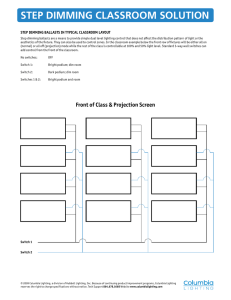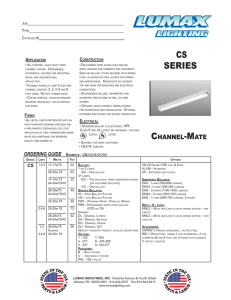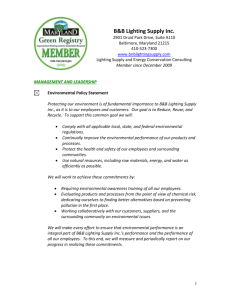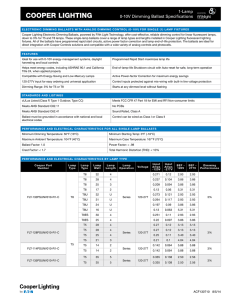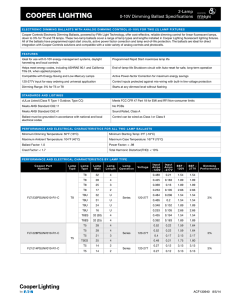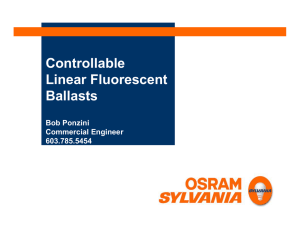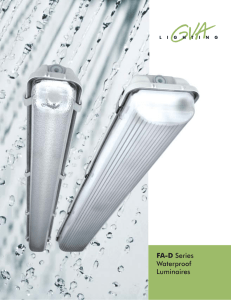Control Options
advertisement
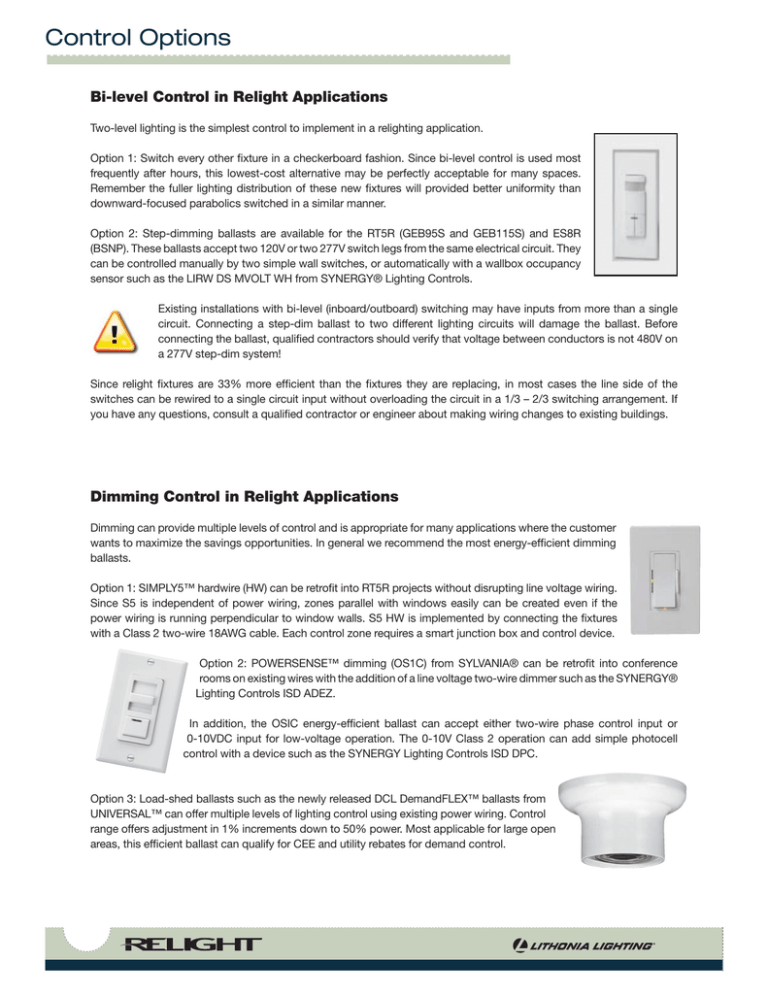
Control Options Bi-level Control in Relight Applications Two-level lighting is the simplest control to implement in a relighting application. Option 1: Switch every other fixture in a checkerboard fashion. Since bi-level control is used most frequently after hours, this lowest-cost alternative may be perfectly acceptable for many spaces. Remember the fuller lighting distribution of these new fixtures will provided better uniformity than downward-focused parabolics switched in a similar manner. Option 2: Step-dimming ballasts are available for the RT5R (GEB95S and GEB115S) and ES8R (BSNP). These ballasts accept two 120V or two 277V switch legs from the same electrical circuit. They can be controlled manually by two simple wall switches, or automatically with a wallbox occupancy sensor such as the LIRW DS MVOLT WH from SYNERGY® Lighting Controls. Existing installations with bi-level (inboard/outboard) switching may have inputs from more than a single circuit. Connecting a step-dim ballast to two different lighting circuits will damage the ballast. Before connecting the ballast, qualified contractors should verify that voltage between conductors is not 480V on a 277V step-dim system! Since relight fixtures are 33% more efficient than the fixtures they are replacing, in most cases the line side of the switches can be rewired to a single circuit input without overloading the circuit in a 1/3 – 2/3 switching arrangement. If you have any questions, consult a qualified contractor or engineer about making wiring changes to existing buildings. Dimming Control in Relight Applications Dimming can provide multiple levels of control and is appropriate for many applications where the customer wants to maximize the savings opportunities. In general we recommend the most energy-efficient dimming ballasts. Option 1: SIMPLY5™ hardwire (HW) can be retrofit into RT5R projects without disrupting line voltage wiring. Since S5 is independent of power wiring, zones parallel with windows easily can be created even if the power wiring is running perpendicular to window walls. S5 HW is implemented by connecting the fixtures with a Class 2 two-wire 18AWG cable. Each control zone requires a smart junction box and control device. Option 2: POWERSENSE™ dimming (OS1C) from SYLVANIA® can be retrofit into conference rooms on existing wires with the addition of a line voltage two-wire dimmer such as the SYNERGY® Lighting Controls ISD ADEZ. In addition, the OSIC energy-efficient ballast can accept either two-wire phase control input or 0-10VDC input for low-voltage operation. The 0-10V Class 2 operation can add simple photocell control with a device such as the SYNERGY Lighting Controls ISD DPC. Option 3: Load-shed ballasts such as the newly released DCL DemandFLEX™ ballasts from UNIVERSAL™ can offer multiple levels of lighting control using existing power wiring. Control range offers adjustment in 1% increments down to 50% power. Most applicable for large open areas, this efficient ballast can qualify for CEE and utility rebates for demand control.
